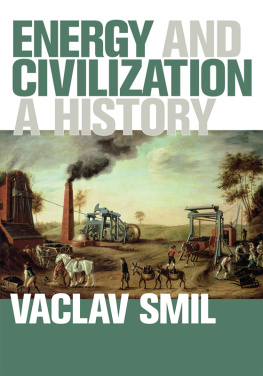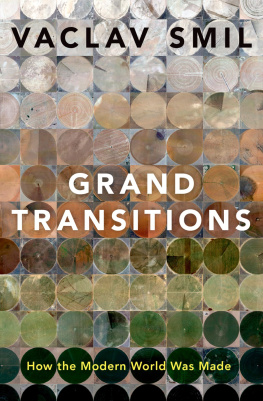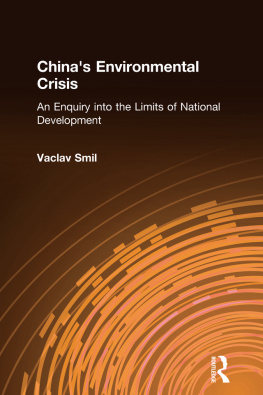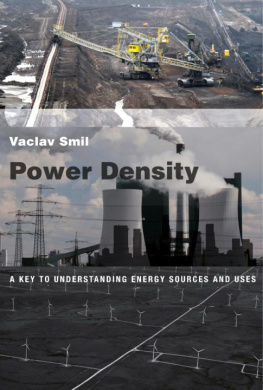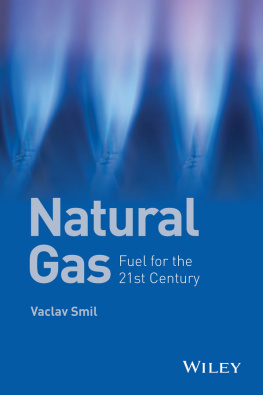Vaclav Smil - Growth: From Microorganisms to Megacities
Here you can read online Vaclav Smil - Growth: From Microorganisms to Megacities full text of the book (entire story) in english for free. Download pdf and epub, get meaning, cover and reviews about this ebook. year: 2019, publisher: The MIT Press, genre: Science. Description of the work, (preface) as well as reviews are available. Best literature library LitArk.com created for fans of good reading and offers a wide selection of genres:
Romance novel
Science fiction
Adventure
Detective
Science
History
Home and family
Prose
Art
Politics
Computer
Non-fiction
Religion
Business
Children
Humor
Choose a favorite category and find really read worthwhile books. Enjoy immersion in the world of imagination, feel the emotions of the characters or learn something new for yourself, make an fascinating discovery.

- Book:Growth: From Microorganisms to Megacities
- Author:
- Publisher:The MIT Press
- Genre:
- Year:2019
- Rating:5 / 5
- Favourites:Add to favourites
- Your mark:
- 100
- 1
- 2
- 3
- 4
- 5
Growth: From Microorganisms to Megacities: summary, description and annotation
We offer to read an annotation, description, summary or preface (depends on what the author of the book "Growth: From Microorganisms to Megacities" wrote himself). If you haven't found the necessary information about the book — write in the comments, we will try to find it.
Growth: From Microorganisms to Megacities — read online for free the complete book (whole text) full work
Below is the text of the book, divided by pages. System saving the place of the last page read, allows you to conveniently read the book "Growth: From Microorganisms to Megacities" online for free, without having to search again every time where you left off. Put a bookmark, and you can go to the page where you finished reading at any time.
Font size:
Interval:
Bookmark:
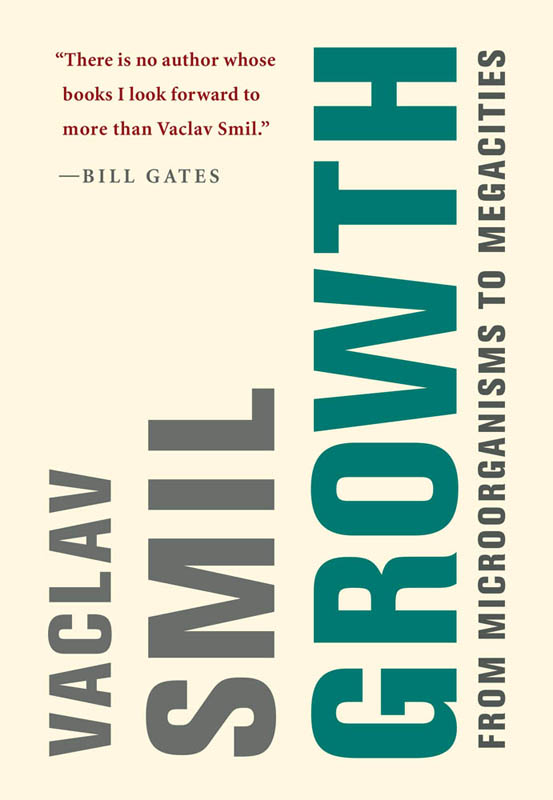
Previous works by author
Chinas Energy
Energy in the Developing World (edited with W. Knowland)
Energy Analysis in Agriculture (with P. Nachman and T. V. Long II)
Biomass Energies
The Bad Earth
Carbon Nitrogen Sulfur
Energy Food Environment
Energy in Chinas Modernization
General Energetics
Chinas Environmental Crisis
Global Ecology
Energy in World History
Cycles of Life
Energies
Feeding the World
Enriching the Earth
The Earths Biosphere
Energy at the Crossroads
Chinas Past, Chinas Future
Creating the 20th Century
Transforming the 20th Century
Energy: A Beginners Guide
Oil: A Beginners Guide
Energy in Nature and Society
Global Catastrophes and Trends
Why America Is Not a New Rome
Energy Transitions
Energy Myths and Realities
Prime Movers of Globalization
Japans Dietary Transition and Its Impacts (with K. Kobayashi)
Harvesting the Biosphere
Should We Eat Meat?
Power Density
Natural Gas
Still the Iron Age
Energy Transitions (new edition)
Energy: A Beginners Guide (new edition)
Energy and Civilization: A History
Oil: A Beginners Guide (new edition)
Growth
From Microorganisms to Megacities
Vaclav Smil
The MIT Press
Cambridge, Massachusetts
London, England
2019 Massachusetts Institute of Technology
All rights reserved. No part of this book may be reproduced in any form by any electronic or mechanical means (including photocopying, recording, or information storage and retrieval) without permission in writing from the publisher.
This book was set in Stone Serif and Stone Sans by Westchester Publishing Services. Printed and bound in the United States of America.
Library of Congress Cataloging-in-Publication Data
Names: Smil, Vaclav, author.
Title: Growth / Vaclav Smil.
Description: Cambridge, MA : The MIT Press, 2019. | Includes bibliographical references and index.
Identifiers: LCCN 2018059356 | ISBN 9780262042833 (hardcover : alk. paper)
Subjects: LCSH: Civilization, Modern21st century. | Technology and civilization. | Growth. | Human ecology. | Population. | Energy development. | Economic development. | Cities and townsGrowth. | Urban ecology (Sociology).
Classification: LCC CB428 .S625 2019 | DDC 909.82dc23
LC record available at https://lccn.loc.gov/2018059356
10987654321
Contents
List of Figures
A quintessential marker of modern growth: Moores law, 19712018. Semi-logarithmic graph shows steady exponential increase from 103 to 1010 components per microchip (Smil 2017a; IBM 2018b).
Thomas A. Edison with his phonograph photographed by Mathew Brady in April 1878. Photograph from Brady-Handy Collection of the Library of Congress.xv
Evolution of average male body heights in Western Europe, 15501980. Data from Clio Infra (2017).
The bestselling American car in 1908 was Ford Model T weighing 540 kg. The bestselling vehicle in 2018 was not a car but a truck, Fords F-150 weighing 2,000 kg. Images from Ford Motor Company catalogue for 1909 and from Trucktrend.
Millennium of stalagmite accretion illustrating linear and exponential growth trajectories.
Graphs of expected height-for-age growth (averages and values within two standard deviations) for boys and girls 25 years old. Simplified from WHO (2006).
Growth of annual global crude oil consumption, 18801970: exponential growth plotted on linear and semilog scales. Data from Smil (2017b).
Predictions of growth of US air travel (in billions of passenger-kilometers) based on the period 19301980 (top, the best fit is quartic regression) and 19302015 (bottom, the best fit is a logistic curve with the inflection year in 1987). Data from various annual reports by the International Civil Aviation Organization.
Hyperbolic growth curve in comparison with exponential growth.
Relay growth of the largest stationary prime mover capacities (Smil 2017b). Overlapping logistic growth of unit ratings of steam engines, water turbines, and steam turbines produces a temporary hyperbolic growth trend with nearly seven-order-magnitude gain in 300 years.
Adolphe Quetelet and Pierre-Franois Verhulst. Steel engravings from the authors collection of 19th-century images.
Verhulsts (1845) comparison of logistic and logarithmic (exponential) curves.
Qualitative characteristics of logistic growth.
Robertsons (1908) comparison of the progress of an autocatalytic reaction with body weight increase of male white rats.
Logistic growth (inflection point at 37.1 days, asymptote at 292.9 cm) of a sunflower plant plotted by Reed and Holland (1919).
Forecast of US population growth based on the logistic curve (inflection point in 1919, asymptote at 197.3 million) fitted to decennial census data between 1790 and 1910 (Pearl and Reed 1920).
The plane that raised a logistic growth ceiling of the cruising speed: Boeing 707. Image from wikimedia.
Logistic curve tracing the growth of cruising speed of commercial airliners 19192039 (inflection point in 1945, asymptotic cruising speed of 930.8 km/h). Plotted from data on speeds of specific airplanes, starting with KLMs de Havilland DH-16 in 1919 and ending with Boeing 787 in 2009.
Fitting Mozarts oeuvre into growth curves: symmetrical (a) and asymmetrical (b) logistic functions and quadratic (c) and quartic (d) regression have all high degrees of fit (R2 = 0.99) but predict substantially different long-term outcomes for the year 1806 when Mozart (who died in 1791) would have been 50 years old. Compositions by date listed in Giegling et al. (1964).
Marchettis (1977) claim of predetermined shares of individual components of the worlds primary energy supply: Fischer-Pry transforms show very regular substitutions.
Actual trajectories of primary energy shares show that this has not been a system with an immutable schedule, a will, and a clock. Shares plotted from data in Smil (2017b).
Logistic growth trajectory (inflection point in 2024, asymptote at 625.5 Wh/kg) of battery energy densities, 19002017. Plotted from data in Zu and Li (2011) and from subsequent news reports.
Examples of confined exponential growth curves (based on Banks 1994).
Carl Friedrich Gauss, Pierre-Simon Laplace, and Abraham de Moivre. Portraits from the authors collection.
Characteristics of the normal distribution curve.
Lognormal species abundance distributions (x axes in log2 classes) of North American fish and birds and less regular distributions of North American and Asian vegetation. Simplified from Anto et al. (2017).
Peaks of two asymmetric distributions, one natural and one anthropogenic: there is only one Qomolangma and one Tokyo. Qomolangma image is available at wikimedia and Tokyos satellite image is from NASAs Earth Observatory collection.
Benfords frequency distribution. Plotted from data in Benford (1938).
Ranking of the 100 largest US metropolitan districts based on 1940 census (Zipf 1949).
Heavy-tailed lognormal distributions of earthquake magnitudes, sizes of forest fires, cities, and the citations of academic papers. Simplified from Clauset et al. (2009).
Font size:
Interval:
Bookmark:
Similar books «Growth: From Microorganisms to Megacities»
Look at similar books to Growth: From Microorganisms to Megacities. We have selected literature similar in name and meaning in the hope of providing readers with more options to find new, interesting, not yet read works.
Discussion, reviews of the book Growth: From Microorganisms to Megacities and just readers' own opinions. Leave your comments, write what you think about the work, its meaning or the main characters. Specify what exactly you liked and what you didn't like, and why you think so.

